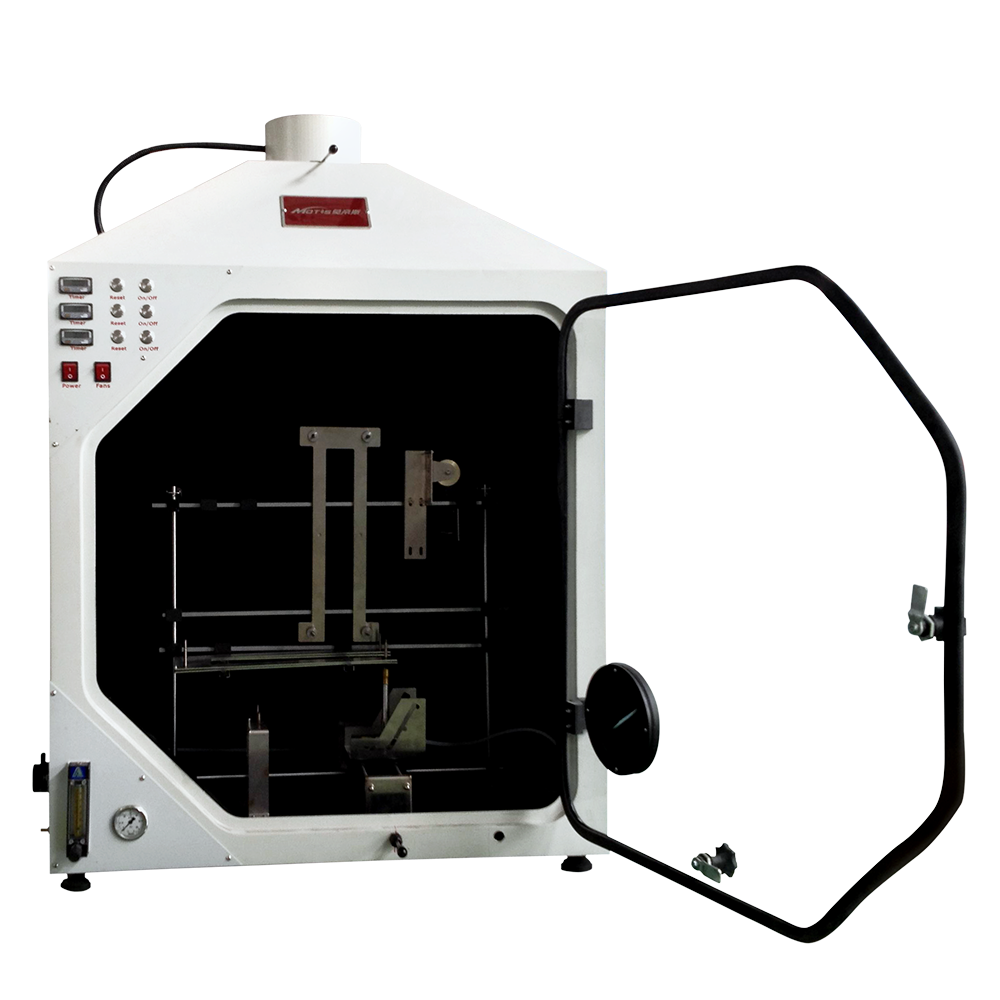Aviation Material Fire Test Equipment
Aircraft cabins are made from a large number of lightweight polymers or composites, and because they fly at high altitudes, the possibility of escape in the event of a fire is limited, making an aircraft fire a significant risk to the lives of passengers and crew. There is therefore a need to ensure that the materials used in the cabin should have limited flammability, smoke production properties, and increased fire resistance through structural design to limit the spread of flames and improve the safety of personnel.
To date, most countries have adopted the US Federal Regulations (FAR), or have issued equivalent domestic regulations, to require the fire resistance of materials and composites used in aircraft construction.
FAR 25.853, Appendix F, establishes test protocols for different cabin materials to assess and standardize the flammability, flame spread characteristics, heat release properties, and smoke production characteristics of cabin materials. The European equivalent is JAR 25.853 and the Chinese equivalent is CCAR-25-R4.
In addition, aircraft manufacturers Airbus and Boeing additionally require more materials to be tested for smoke and propose requirements for toxicity testing of materials.
Motis provides all aviation material fire test equipment of FAR 25.853 Appendix F, FAA Fire Test Handbook, Airbus Test Method, and Boeing Test Method.
14 CFR 25.853 Part IV, FAA Fire Test Handbook Chapter 5, ASTM E906, Boeing BSS 7322, Airbus AITM 2.0006
14 CFR 25.853 Part V, FAA Fire Test Handbook Chapter 6, Boeing BSS 7238, AITM 2.0007A/B
14 CFR 25.853 Part VI, Boeing BSS 7365, Airbus AITM 2.0053
14 CFR 25.853 Part II, FAA Fire Test Handbook Chapter 7, Boeing BSS 7303, Airbus AITM 2.0009
14 CFR 25.853 Part III, FAA Fire Test Handbook Chapter 8, Boeing BSS 7323, Airbus AITM 2.0010
14 CFR 25.853 Part VII, Boeing BSS 7387, Airbus AITM 2.0056
FAA Fire Test Handbook Chapter 12
14 CFR 25.853 Part I; FAA Fire Test Handbook Chapter 1 to 4; Boeing BSS 7230: F1 to F6; Airbus AITM 2.0002 to 2.0005.
Boeing BSS 7239, Airbus AITM 3.005











